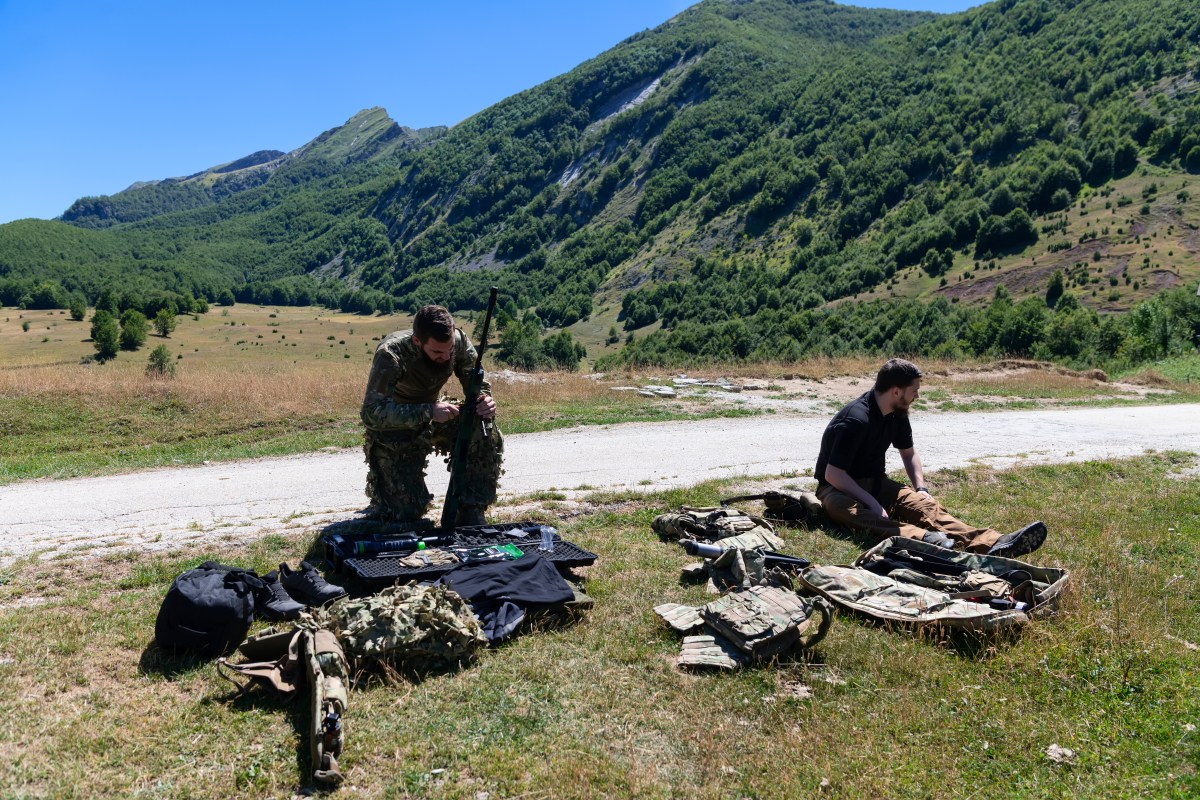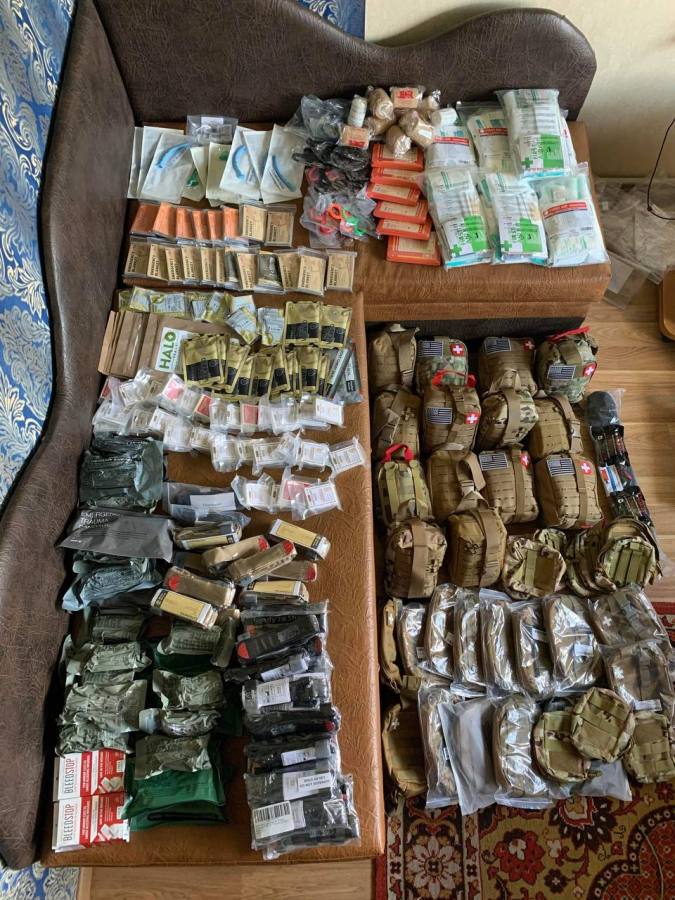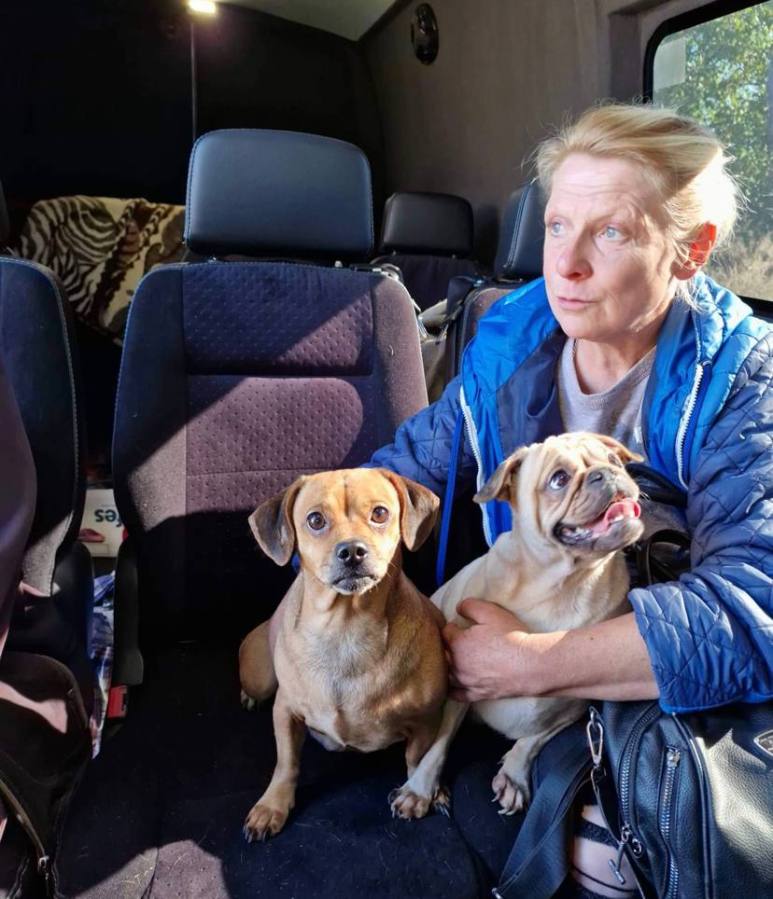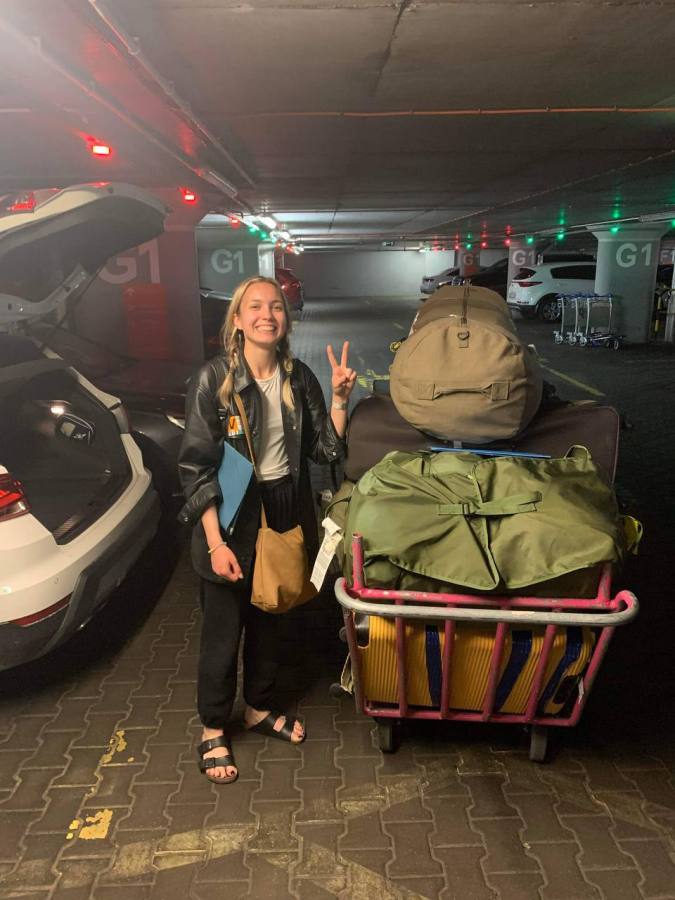Ukraine is in the news daily at the moment, but you don’t hear much of how DAOs and Web3 is being used.
The Chainsaw sat down with Anna of Help UA Now, a non-profit platform that curates critical impact and aid projects run by volunteers on the frontlines in Ukraine. Anna’s background is in marketing and operations, and she’s led and collaborated on a variety of projects prior to joining the Web3 space — including tackling supply chain issues to helping VCs, as well as working on small business development within emerging markets.
On the 24th of February, Anna was at a Web3 conference in Denver when the war was announced. Her first exposure to Web3 was when she joined a blockchain hackathon platform, and for the majority of this year, she’s been heads down focusing on immobilising communities to accelerate aid in the Russia-Ukraine war.
We sat down with Anna to learn about how Web3 tools can help drive donor funds to one of the most critically pressing issues we’re facing within society today.
Sam: Hi everyone, I’d like to just firstly acknowledge that my side of this Twitter spaces is taking place on the land of the Wurundjeri people and I would like to pay my respects to their elders, past, present, future and emerging, and would also just like to say an enormous thank you to Anna, for joining us today. Anna, can you tell us a little bit about yourself?
Anna: Thank you so much for having me here and providing a platform to speak about Ukraine. I first got into the Web3 space last November as a marketing consultant for a blockchain development platform. I grew up in Ukraine and my friends and family are still there. Once the full-scale invasion started in late February, I switched gears and began contributing to different community efforts to support them and other people in Ukraine.
Sam: I met you at ETHDenver, which for anyone who doesn’t know is a congregation of more than 20,000 Ethereum technologists from politicians to nerds, royalty and governments and artists, to modern day philosophers. We spent that second week relaxing after quite an intense 10 days at the Denver sports castle in Breckenridge. And it was a beautiful moment there. But on the other side of the world, it was very dark times. I remember when we were there, some of the guys were asking what you thought was going to happen and then by the middle of the week, the war had broken out.
So just a little bit of background. Late February this year, Russia launched an invasion of Ukraine by land, air and sea after tensions between Moscow and Kyiv, which has triggered a war that has seen tens of thousands of people lose their lives and more than 5 million people have since fled.
And then just this week, Russia has announced that they will annex occupied territories of Ukraine, while warning of pretty significant nuclear consequences. It seems that a lot of these conversations are not as prominent as they were back then. Do you want to go back to that moment and explain what happened and your journey since Breckenridge? Because you really have not stopped trying to accelerate aid since that moment.
Anna: Breckenridge was definitely a beautiful culmination of ETHDenver, and I really enjoyed it until the news of the invasion. I remember geopolitical tensions surfacing in conversations. People were reading the news and asking me, “hey, it seems like the tensions are growing. Do you think war is possible?” My response was, “I don’t know. I hope not.”

And then one night I was sitting in the chair in this very nice peaceful cabin and my acquaintances started messaging me saying there’s a video live of Putin declaring the invasion. It was horrifying and very disorienting. I can’t say I was fully surprised because Russia had invaded Ukraine back in 2014. Prior to 2014, it tried to manipulate Ukraine’s government through more discreet means like putting different pro-Russia people in power in the Ukrainian government, or airing Russian propaganda on some of the privately owned media channels. So, there’s a long history of oppression stemming from Russia’s imperialist desires to control the region and specifically conquer Ukraine in one way or another.
But at the same time, I think the method that Putin chose took us by surprise because the war began from multiple missiles being launched on major cities in Ukraine. On the very first day, they targeted just military infrastructure like airports. An airport in my hometown was bombed. Then they also bombed logistics hubs. But over the matter of just a few days, bombings of civilian buildings and neighbourhoods began. It was scary, disorienting and chaotic. I didn’t know what could be done to stop this atrocity. And I think that’s the feeling I was sharing with a lot of Ukrainians.
Another thing that we all have in common was that we were very proactive. If Ukranians were in safe areas, their first question was, how do we help? What are the things we can do? And, for me, I didn’t have an immediate answer to these questions. I dived into multiple different causes before committing to support local volunteer groups with fundraising with helpuanow.org.
My academic background is in cognitive neuroscience and governance, including some international politics. So, the first direction I explored was supporting the fight against misinformation. I started with a bunch of research and talking to people who are working in the field. But almost immediately I saw a large communal effort from Ukrainian civil society to emphasise fact checking and making sure that we’re sharing only the correct information. More expert cyber groups were working on bringing factually verified information to Russian civil society, and I realised that my skill sets and efforts would probably be more impactful in supporting other causes.
Another cause that I explored was documenting war crimes. As I’ve mentioned, in the first few days there was bombing of civilian infrastructure and mass casualties among Ukrainian civilians. Civilians began documenting the potential crimes and cases where Russia was not following the international laws. By now the amount of human rights and war laws violations reached thousands of instances, so in retrospect it was an important cause to support. Back then, I interviewed a former prosecutor at the International Criminal Court trying to define a set of procedural and substantive criteria for these violations and tried to work with different Web3 groups to see if there’s a way we can store this information on a blockchain. The Ukrainian government ended up creating their own interface for people to upload photo evidence and descriptions of war crimes, so I wrapped my efforts just by sharing the research and insights with different journalist groups.
I also got to be involved very early on with supplying the aid to both civilians and volunteer military battalions. One of my good friends was a volunteer combat medic, who unfortunately was already very close to the frontline at the time of invasion. His first request was getting a better helmet, and then medical supplies for volunteer soldiers in his battalion. So I was helping him find out where to source the best supplies and as I was going through that process, I joined a lot of informal volunteer networks with people who similarly to me had friends or family members joining the volunteer battalions and needed bulletproof vests or first aid kits. Our main goal was to find out how to get them supplies — and quickly.

My initial thought was, ‘how can we make this process more efficient and increase the supply of life-saving aid to support all the new volunteers joining the Ukrainian military?’ This would involve some sort of centralisation, like creating a platform where volunteers can share information on trusted suppliers and coordinate the aid delivery. But this could create some dangerous tradeoffs for the safety of people involved in delivery and the recipients of aid, so with the volunteers I was working with at the time, we voted against that avenue. Another way to amplify essential aid supply was by providing trusted volunteers with more financial resources so they can purchase it in bigger quantities.
With a group of 30 other Ukrainians, we started creating a spreadsheet of volunteer groups and smaller local NGOs who focused on critical aid and whose fundraising efforts we could amplify. Then someone proposed to create a website for the effort, we migrated to Discord and started working on helpuanow.org, a platform where we could feature high-impact, life-saving volunteer efforts. And the rest is history. Over the first few months we’ve expanded from our initial focus on aid for the military to humanitarian aid and evacuations in combat zones, and managed to secure $150,000 in direct donations to small but critical volunteer efforts.
Sam: Some of your friends during that week in Breckenridge were asking you if you had intel on safe routes out of cities, and then one of the first things you bought using a donation from a friend was two cars to evacuate people, right?
Anna: Yes, that was the first 24 hours of invasion. My friends were trying to leave major cities and I was gathering information on the safer roads that are less likely to get bombed. The car purchase was for volunteer battalions evacuation. One person from the conference donated a really significant amount and said, “use this to whatever you think is the most important.” So it went to support my friends on the frontlines, first with protective gear and then to purchase cars to help evacuate people. At first I was kind of confused when they wanted to buy a car, but it turned out to be very essential for getting people in and out from the frontlines quickly, especially the wounded soldiers. Later in my efforts with HelpUANow, we’ve supported purchase of mini-buses to evacuate civilians who lived in combat zones. Often, evacuation convoys would be targeted by Russia’s military despite clear markings that they’re civilian. The roads for evacuation would also be frequently mined or damaged by missile strikes, so more compact vehicles that could handle these were essential.
Sam: A lot of people during times of crisis who aren’t on the ground want to be able to make a difference. But it’s hard to know how. And this is the issue that blockchain and DAOs can help — people just can’t really see what’s happening or whether the money is going in most traditional structures, and you gathered all of that data about exactly how much it would cost to provide aid for certain things, like evacuating a family or housing more than 50 people for a month. Can you talk through that process of transparency on the ground?
Anna: Yeah, absolutely. The price points we typically share with prospective donors came from direct experience working with different local groups on the ground. Most of the time, if the supplies are available, it’s more cost-effective to purchase them locally. Working with different groups allowed us to get a better sense of the average prices and open up conversations with volunteers when some efforts had above-the-average funding needs.

In terms of transparency and accountability via blockchain, whenever someone donates, they could see their funds being secured in one multi-sig, and being distributed through a process of proposals. We never hosted donations at HelpUANow and always facilitated direct donations to the volunteer efforts, but some of our partners like the PeaceDAO used blockchain and DAO structure in this way. I was quite active in supporting their Ops until recently.
There, any donor could see what each organisation’s proposal is and how much they would receive, and also participate in the funds distribution by voting. They would also be able to track the history of the impact created by their funding through the updates in the impact channel in PeaceDAO’s Discord. Our HelpUANow community is now in the process of weighing the tradeoffs for adopting this model as well.
Sam: What about the participation aspect? The advantage of Web3 is that it doesn’t matter where you are or who you are, if you’re aligned and want to help, you can do so because you have permission to. What did that look like, and how did you go about helping people who weren’t native to DAO infrastructure?
Anna: That was challenging. In the beginning there were a lot of Web3 people, so people who knew how to vote on proposals or use Discord. But overtime as we tried to engage different stakeholders including local NGOs or politicians, a lot of people struggled with figuring out how to use Discord servers or how to donate with crypto. There’s still a prominent educational barrier at the moment.
Sam: Well even the ability to pay crypto itself is going to have more of an impact than fiat because the process of transferring and exchanging across borders is costly and you lose some of the funds. What are some of the main benefits you’ve seen in using Web3 to accelerate aid?
Anna: I view tokenization as an important tool for letting people participate. Additionally, crypto allows to reduce intermediaries and coupled with community due diligence, reduces corruption. By using crypto, you’re also ensuring that the fund distribution process is transparent and people can see exactly where the money is coming from, where it is going, and what impact the donation is making.
You also see more donor agency — people who put their hard earned money into the donation pool can decide what causes and specific projects their money will support. This incentivises people to contribute more as they become a more active part of the change and they see that the impact of their donations aligns with their beliefs. There’s a lot of positive feedback loops in letting donors have more agency in the funds deployment process.
Sam: A majority of people want to contribute in some way, and while a lot of charities are doing really incredible work, it’s hard for people to trust where the money is going because they can’t see it. You get monitoring reports and milestone updates but it’s not live — so it’s less tangible.
Anna: I think a lot of people actually find it easier to donate to bigger charities because they’ve got a brand name and they don’t have to be as concerned with the trust component. But take the Red Cross for example. It has been around for decades and many people from abroad donated to the organisation initially in hopes to support Ukraine. Yet, Red Cross have repeatedly refused to enter combat zones to support civilian populations there, they failed to create humanitarian “green” corridors for evacuation authorised under the international law, they sought to open an office on Russia’s side of the border, and have evacuated people from Mariupol, a city destroyed by Russia’s shellings, into the territory of the aggressor country.
The challenge is that when organisations get very big, there’s factors involved that you wouldn’t necessarily call straight-out corruption. When these large organisations become international actors, there’s political power struggles. And there’s also a lack of an attempt to make every dollar go the furthest. For example, often they would work with partners they knew for a while or introduced to them via personal NGO connections, instead of doing the due diligence and partnering with smaller but high-impact volunteer groups.
Another issue with larger organisations is that there’s often a high barrier of entry to participate, or you don’t get the opportunity to participate at all. I have an example that isn’t exactly related to the war. I love dogs. And last year I wanted to find a shelter in San Francisco that would let me occasionally take dogs on walks. I encountered a long list of requirements, multiple forms to fill out, and some pretty serious commitment expectations. The whole bureaucracy was just funny. Though I understand they might have had their reasons, this was way too much and clearly discouraging. Similarly, for most NGOs you can’t just join and contribute. You have to go through certain obligatory processes, meet their requirements, and dedicate tens of hours to their effort. This can prevent a lot of people who want to help from getting involved. DAOs are typically more permissionless, letting anyone join and contribute to the extent they’re able.

Sam: There’s many ways you can use this tech to get aid to where it’s needed faster. I first learned about blockchain when I was working with World Vision and the UN World Food Programme who were using digital ID to provide formal identity and financial services to refugees so they can access aid.
When you flee, you don’t have the data that says you’re entitled to human rights and services. Right now there’s more than 2 billion people who don’t have access to formal financial services so they’re often excluded from the aid system, so participation has a whole new meaning when you can store and transfer data that includes people across borders.
Or there was a project distributing aid credits on Ethereum via SMS and recipients could receive the tokens and exchange them for goods, services or aid. In terms of speed and urgency, crypto helps aid get there faster to the people who need it most.
Anna: Those are really cool examples. There’s so many different tools and Web3-native organisational structures you can use to facilitate donations and deliver aid to people in need. And it’s most interesting that they don’t have to be set up the same way. UkraineDAO for example received donations from the Web3 community, but they didn’t implement a more traditional DAO structure to distribute the funds they received. Instead they donated to credible large-scale fundraising efforts by the Ukrainian government and focused their DAO efforts on activism, and combating misinformation instead.
I think this highlights that for some things you might need tokens and for some efforts you don’t. For some efforts, you might not need a Discord. There’s a lot of different configurations for different goals you’re trying to achieve.
Sam: Yeah they saw millions of dollars of donations from people like Vitalik in ETH (Ethereum) or Gavin Wood in DOT (Polkadot). Then you have DAO Charity who dropped NFTs to showcase the Freedom Fighters. And so the token as an NFT becomes more of a tangible asset to hold. Or NFTs of the flag, like UkraineDAO did. Were there other examples you saw that drove donor funds to the field?
Anna: Yeah, some of my friends have created a platform PoignART that lets anyone launch their NFT collection and donate the funds to Ukraine. The platform or the artists never holds custody over the funds – after the NFT sale, the money are going directly to Unchain Fund that later distributes the donations to local volunteers, or small to big projects in Ukraine. This is a really cool, technical setup. I’m curious to hear from Birdman who is a lead developer at Help UA Now — he joined us very early on when we were just a small group of people trying to support projects in Ukraine. He’s been in Web3 for a while and plays an active role in the Bankless DAO. What do you think are some of the main benefits in adopting Web3 for humanitarian aid relief?
Birdman: Thanks Anna — yes I agree, when we launched Help UA Now we were heads down trying to get the functionality of the website up as quickly as possible and weren’t thinking so much about being a DAO. But I do think there’s a massive opportunity to integrate Web3 technology when it comes to impact projects but it does require a special kind of person who is experienced in that. But even with Help UA Now it was the general giving of people from this community who are always looking to find ways to help and make an impact.
Sam: Yeah, I’m not sure if you heard but recently some of the guys from MolochDAO and MetaCartel and other community groups launched Public Nouns which is a fork of Nouns where every 12 hours you can bid on a Public Nouns NFT where all funds will go towards public goods. It’s only been a few days and they’ve already raised more than $100,000. It’s a unique example of how we can develop new initiatives in crypto to quickly get people to donate money around an important cause. The treasury for them will likely go towards hackathons or other initiatives that will amplify creative ideas around how we accelerate impact.
The conflict is still happening, and we need to do more for it. And even though it’s a bear market, we know that the Web3 community will always be willing to help, but we might need to drive more awareness by exploring new tools to raise funds as soon as possible and get funds to where they’re needed as soon as possible.
Birdman: Yeah, and I guess that is the beauty of DAOs. You can get people to vote on how they want to do it rather than being stuck to policies of a more centralised organisation where you follow more rigid rules. Web3 funds can come faster because the rules are customisable and there are definitely massive opportunities we can explore there.
I want to just shout out to a project that’s not necessarily to do with Ukraine, but just in general in terms of funding public goods. It’s called Rainbow DAO and they’re supporting a project called RIP Medical Debt which has wiped out an incredible amount of medical debt, and they do medical debt relief through the sale of NFTs. We also saw the Ukraine government launching an NFT museum with photographs of the war and they become NFTs to drive more funds. There are really great use cases for Web3 tools like this and for organising philanthropy and community impact.
I definitely do think that Web2 and Web3 can come together and make more impact in the community.
Sam: Anna, thank you so much for sharing your insights on Help UA Now and Web3’s presence in philanthropy. And thank you Birdman for sharing your insights too. You’re both doing such incredible work.
Anna: Thank you so much, everyone.
Find out about HelpUANow in the Discord here.





